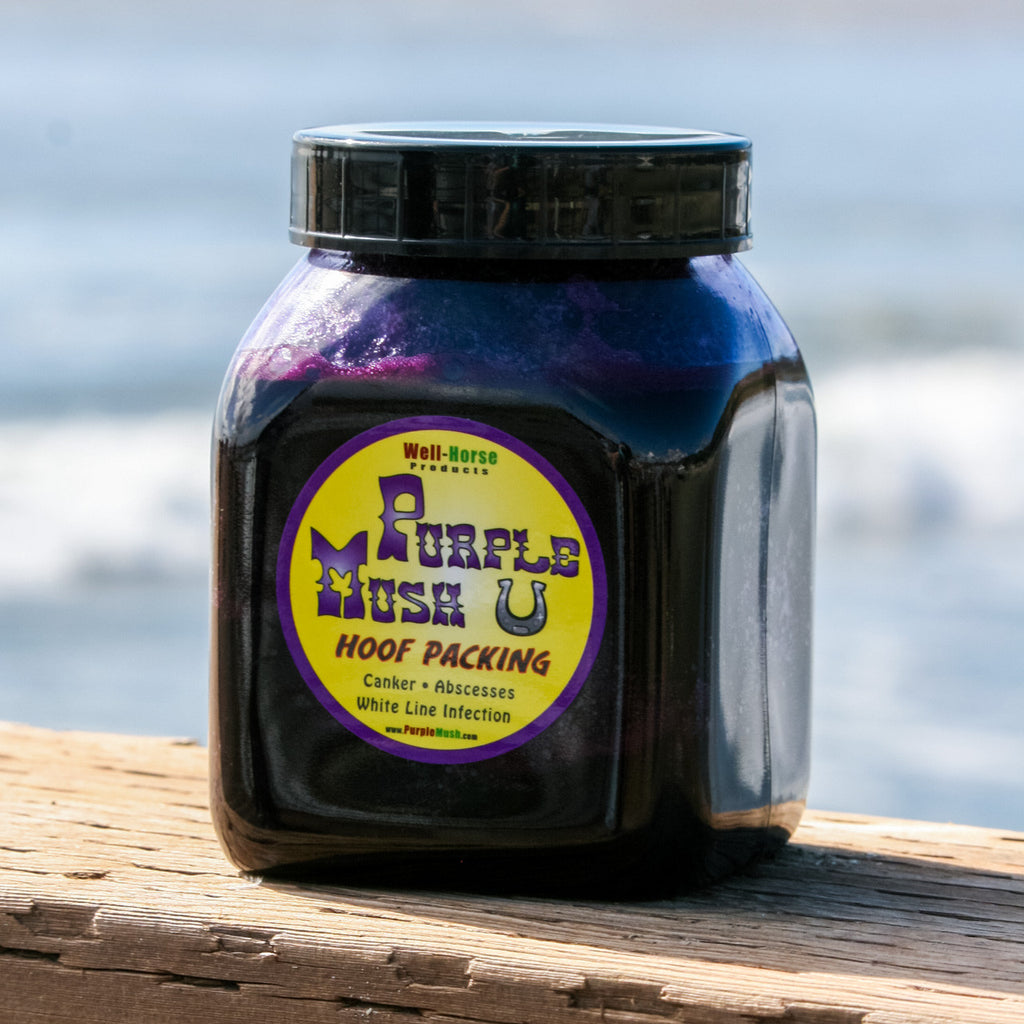Clinical Signs
Canker generally originates in the frog and can be mistaken for thrush in the early stages. Thrush is limited to the lateral and medial sulcus or the base of the frog if a fissure is present whereas canker invades the horn of the frog anywhere throughout its structure. There is a proliferation of tissue with canker versus a loss of tissue as with thrush. In the early stages canker may present as a focal area of granulation tissue in the frog that bleeds easily when abraded. Upon closer inspection a light brown or grey tissue will surround this focal area.
Equine canker is described as an infectious/viral process that results in the development of a chronic hypertrophy of the horn-producing tissues. It generally originates in the frog; may remain focal, but has the capacity to become diffuse and invade the adjacent sole, bars and hoof wall. Canker can occur in one foot or multiple feet may be involved. The disease is commonly seen in draft breeds but can affect any breed or sex. The etiology of canker remains elusive but wet environmental or moist unhygienic conditions have traditionally been thought to act as a stimulus, however, canker is commonly seen in horses that are well cared for and horses who receive regular hoof care. One author (JBM) observed a seasonal incidence of canker in Florida as the majority of cases presented to his hospital were during the months of July through December. The treatments described in the literature have consisted of debridement and the application of topical medications including Well-Horse's product "Purple Mush". This treatment to date has been consistently effective in treating this disease with an 80% success rate and the prognosis improving dramatically.

